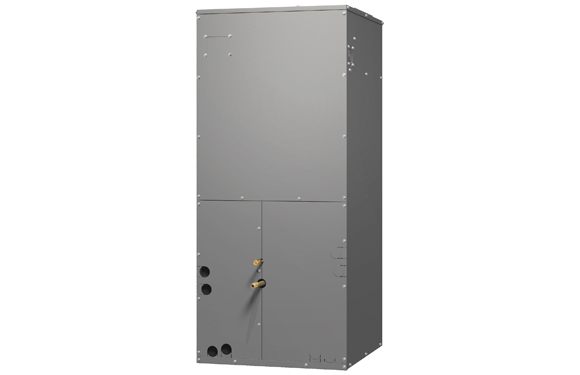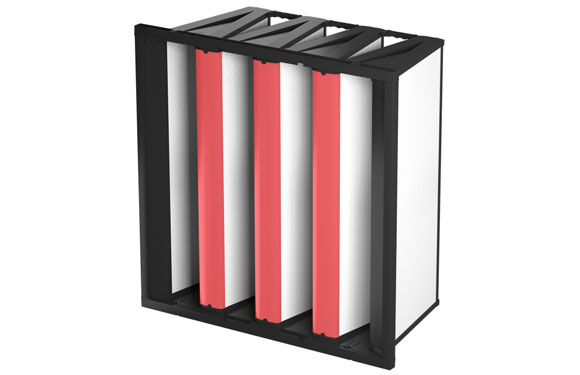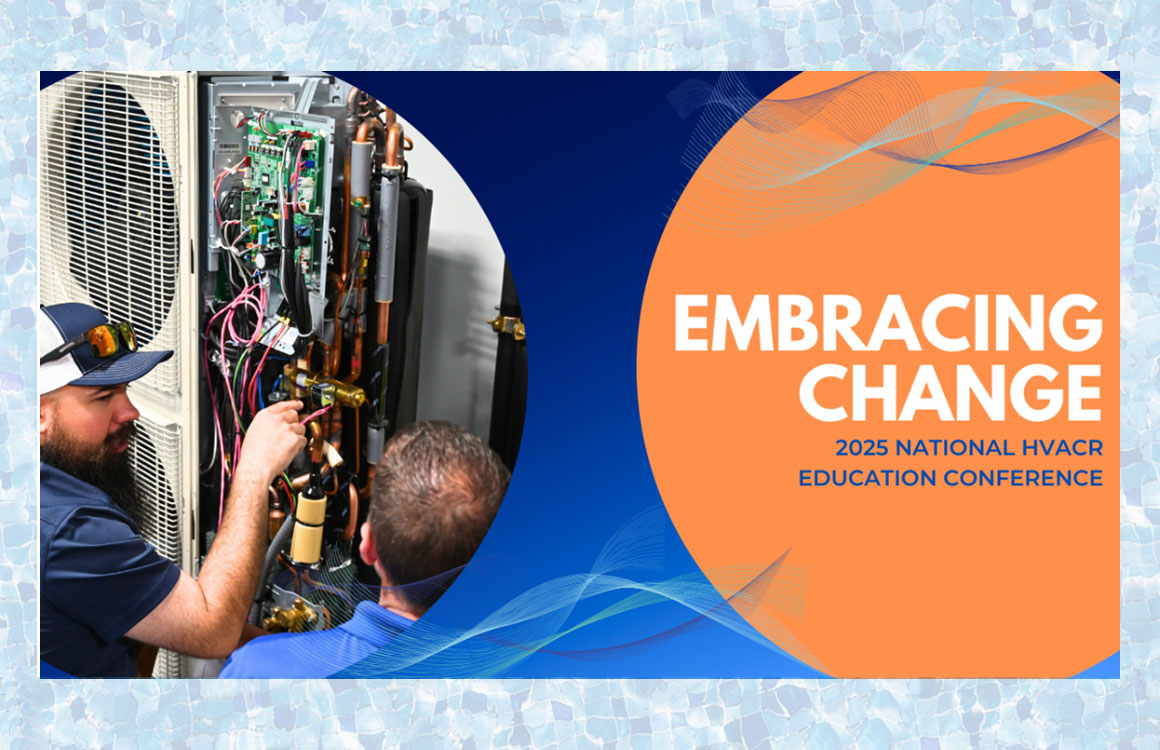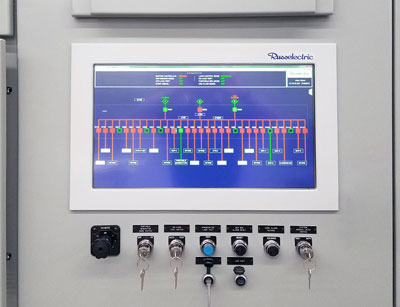
Products
Power Control System Service and Updates Provide Cost Savings and Greater Uptime
By Steve Dunn, Aftermarket Product Line Manager, Russelectric Inc.
Aging power control and automation systems can carry risk, both in terms of downtime of mission-critical power systems, through reduced availability of replacement components and the knowledge to replace existing devices within. Of course, as components age, their risk of failure increases. Additionally, as technology advances, these same components are discontinued and become unavailable, and over time, service personnel lose the know‐how to support the older generation of products. At the same time, though, complete replacement of these aging systems can be extremely expensive, and may also require far more downtime or additional space than these facilities can sustain.
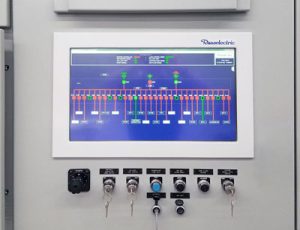 The solution, of course, is the careful maintenance and timely replacement of power control and automation system components. By replacing only some components of the system at any given time, customers can benefit from the new capabilities and increased reliability of current technology, all while uptime is maintained. In particular, expert service providers can provide in-house wiring, testing, and vetting of system upgrades before components even ship to customers, ensuring minimal downtime. These services are particularly useful in in healthcare facilities and datacenter applications, where power control is mission-critical and downtime is costly.
The solution, of course, is the careful maintenance and timely replacement of power control and automation system components. By replacing only some components of the system at any given time, customers can benefit from the new capabilities and increased reliability of current technology, all while uptime is maintained. In particular, expert service providers can provide in-house wiring, testing, and vetting of system upgrades before components even ship to customers, ensuring minimal downtime. These services are particularly useful in in healthcare facilities and datacenter applications, where power control is mission-critical and downtime is costly.
Automatic Transfer Switch (ATS) controllers and switchgear systems require some different types of maintenance and upgrades due to the differences in their components; however, the cost savings and improved uptime that maintenance and upgrades can provide are available to customers with either of these types of systems. The following maintenance programs and system upgrades can extend the lifetime of a power control system, minimize downtime in mission-critical power systems, and save costs.
Audits and Preventative Maintenance
Before creating a maintenance schedule or beginning upgrades, getting an expert technician into a facility to audit the existing system provides long-term benefits and provides the ability to prioritize. With a full equipment audit, a technician or application engineer who specializes in upgrading existing systems can look at an existing system and provide customers with a detailed migration plan for upgrading the system, in order of priority, as well as a plan for preventative maintenance.
Whenever possible, scheduled preventative maintenance should be performed by factory-trained service employees of the power control system OEM, rather than by a third party. In addition to having the most detailed knowledge of the equipment, factory-trained service employees can typically provide the widest range of maintenance services. While third-party testing companies may only maintain power breakers and protective relay devices, OEM service providers will also maintain the controls within the system.
Through these system audits and regular maintenance plans, technicians can ensure that all equipment is and remains operational, and they can identify components that are likely to become problematic before they actually fail and cause downtime in a mission-critical system.
Upgrades for ATS Control Systems with Minimal System Disruption
In ATS controller systems, control upgrades can provide customers with greater power monitoring and metering. In addition, replacing the controls for aging ATS systems ensures that all components of the system controls are still in production, and therefore will be available for replacement at a reasonable cost and turnaround time. In comparison, trying to locate out-of-production components for an old control package can lead to high costs and a long turnaround time for repairs.
The most advanced service providers minimize downtime during ATS control by pre-wiring the control and fully testing it within their own production facilities. When Russelectric performs ATS control upgrades, a pre-wired, fully-tested control package is shipped to the customer in one piece. The ATS is shut down only for as long as it takes to install the new controls retrofit, minimizing disruption.
In addition, new technology also improves system usability, similar to making the switch from a flip phone to a smartphone. New ATS controls from Russelectric, for example, feature a sizeable color screen with historical data and alarm reporting. All of the alerts, details and information on the switch are easily accessible, providing the operator with greater information when it matters most. This upgrade also paves the way for optional remote monitoring through a SCADA or HMI system, further improving usability and ease of system monitoring.
Switchgear System Upgrades
For switchgear systems, four main upgrades are possible in order to improve system operations and reliability without requiring a full system replacement: operator interface upgrades, PLC upgrades, breaker upgrades, and controls retrofits. Though each may be necessary at different times for different power control systems, all four upgrades are cost-effective, extend system lifespans, and minimize downtime.
Operator Interface Upgrades for Switchgear Systems
00Similar to the ATS control upgrade, an operator interface (OI) or HMI upgrade for a switchgear power control system can greatly improve system usability, making monitoring easier and more effective for operators. This upgrade enables operators to see the system power flow, as well as to view alarms and system events in real time.
Also similar to ATS control upgrades, upgrading the OI also ensures that components will be in production and easily available for repairs. The greatest benefit, though, is providing operators real-time vision into system alerts without requiring them to walk through the system itself and search for indicator lights and alarms. Though upgrading this interface does not impact the actual system control, it provides numerous day-to-day benefits, enabling faster and easier troubleshooting and more timely maintenance.
Upgrades to PLC and Communication Hardware without Disrupting Operations
Many existing systems utilize legacy or approaching end-of-life PLC architecture. PLC upgrades allow for upgrading a switchgear control system to the newest technology with minimal program changes. Relying on expert OEM service providers for this process can also simplify the process of upgrading PLC and communications hardware, protecting customers’ investments in power control systems while extending noticeable system benefits.
A PLC upgrade by Russelectric includes all new PLC and communication hardware for the controls of the existing system, but maintains the existing logic and converts it for the latest technology. Upgrading the technology does not require new logic or operational sequences. As a result, the operations of the system remain unchanged and existing wiring is maintained. This greatly reduces the likelihood that the system will need to be fully recommissioned and minimizes downtime necessary for testing. Russelectric’s unique process of both converting existing logic and, as previously mentioned, testing components in their own production facility before sending out to the facility for installation, gives them a correspondingly unique ability to keep a system operational through the entire upgrade process. In addition, Russelectric has developed some very unique processes for installation, using a sequence to systematically replace the PLC’s, replacing only one PLC at a time, and converting the communications from PLC to PLC as components are replaced. This allows Russelectric to keep systems operational throughout the process. Russelectric’s experts minimize the risk of mission-critical power system downtime.
Breaker and Protective Relay Upgrades for Added Reliability and Protection
Breaker upgrades may often be necessary to ensure system protection and reliability, even through many years of normal use. Two different types of breaker modifications or upgrades are available for switchgear power control systems: breaker retrofill and breaker retrofit. A retrofill breaker upgrade calls for an entirely new device in place of an existing breaker system. Retrofill upgrades maintain existing protections, lengthen service life, and provide added benefits of power metering and other add-on protections, like arc flash protections and maintenance of UL approvals.
Breaker retrofits can provide these same benefits, but they do so through a process of reengineering an existing breaker configuration. This upgrade requires a somewhat more labor-intensive installation, but provides generally the same end result. Whether a system requires a retrofit or retrofill upgrade is largely determined by the existing power breakers in a system.
0For medium voltage systems, protective relay upgrades from single function solid state or mechanical protective devices to multifunction protective devices provide protection and reliability upgrades to a system. Upgrading to multifunction protective relays provide enhanced protection, lengthen service life of a system, and provide added benefits of power metering, communications and other add-on protections, like arc flash protections.
Russelectric prewires and tests new doors with the new protective devices ready for installation. This allows for minimal disruption to a system and allows for easy replacement.
Controls Retrofits Revive Aging Systems
For older switchgear systems that predate PLC controls, one of the most effective upgrades for extending system life and serviceability is a controls retrofit. This process includes a fully new control interior, interior control panels, and doors. This enables customers to replace end-of-life components, update to the latest control equipment and sequence standards, and access benefits of visibility described above for OI upgrades.
The major consideration and requirement is to maintain the switchgear control wiring interconnect location to eliminate the requirement for new control wiring between other switchgear, ATS’s, and generators. In retrofitting controls rather than replacing, retrofitting the controls allows the existing wiring to be maintained and provides a major cost savings to the system upgrade.
Just as with ATS controls retrofits, Russelectric builds the control panels and doors within their own facilities and simulate non-controls components from the customer’s system that are not being replaced. In doing so, technicians can fully test the retrofit before replacing the existing controls. What’s more, Russelectric can provide customers with temporary generators and temporary control panels so that the existing system can be strategically upgraded, one cubicle at a time, while maintaining a fully operational system.
Benefits of an Expert Service Provider
As described throughout this article, relying on expert OEM service providers like Russelectric amplifies the benefits of power control system upgrades. With the right service provided at the 0right time by industry experts, mission-critical power control systems, like those in healthcare facilities and datacenters, can be upgraded with a minimum of downtime and costs. OEMs are often the greatest experts on their own products, with access to all of the drawings and documentation for each product, and are therefore most able to perform maintenance and upgrades in the most effective and efficient manner.
Some of the most important cost-saving measures for power control system upgrades can only be achieved by OEM service providers. For example, maintaining existing interconnect control wiring between power equipment and external equipment provides key cost savings, as it eliminates the need for electrical contractors in installing a new system. Given that steel and copper substructure hardware can greatly outlast control components, retrofitting these existing components can also provide major cost savings. Finally, having access to temporary controls or power sources, pre-tested components, and the manufacturer’s component knowledge all helps to practically eliminate downtime, saving costs and removing barriers to upgrades. By upgrading a power control system with an OEM service provider, power system customers with mission-critical power systems gain the latest technology without the worry of downtime and huge costs associated with full system replacement.


